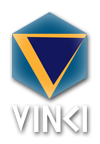 |
s45b0Rykami Yasmyne |
The Argam Arimaxa Numeral Set

In the latter half of May 1992, after IIT's semester had finished in Castiglion Fiorentino, I stayed with the Righi Family in town for a week. In the middle of the stay I travelled to Barcelona and Paris for a couple weeks. The long train rides and nights exhausted from exploring towns had me focusing some free time on mathematics. The Apple II manuals of 1981 introduced me to hexadecimal, which I had accepted as a better way to count by dint of its being useful to computer programmers. Something bugged me about using letters for numerals. By age 12 I decided duodecimal was superior to hexadecimal because of divisibility and fractions, and had adopted the first two letters of a constructed language alphabet I’d concocted at the time. Later I replaced the digit-ten with a figure-2 rotated 180°. This numeral set eventually covered hexadecimal and vigesimal, and in Barcelona was extended to sixty numerals. I named the numeral set Argam Arimaxa after a girlfriend (Arimaxâ), in line with the name of the life-phase of the time. I programmed an HP-28S calculator to output in argam in 1993, when this record was first placed in the book. The symbol set was expanded to 100 numerals over the next couple months. The original sexagesimal argam have remained more or less as they are, while most of the extension has been done away with and reformed in November 2006.
The numeral set has matured over more than a generation, in its present state as simply “argam numerals”. View a current set (PDF) of argam numerals for sexagesimal and base-360, and view an example of how I’ve used argam numerals in digit maps across many number bases. Such digit maps were peer-reviewed by PhDs and published in the March 2012 edition of ACM-Inroads, a magazine of computer science education.
Produced 29 October 1992 = Tayya 4878, four dozen eighth life-phase (Safyr-Arimaxal Xrga), 25 December 1992 = Tayya 4905, four dozen ninth life-phase (Safyra-Rukaminal Xrga).
This page last modified Wednesday 4 April 2012.